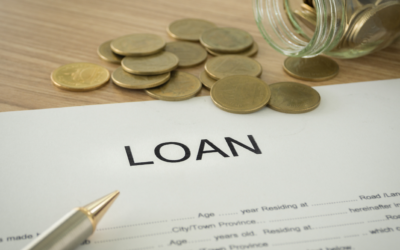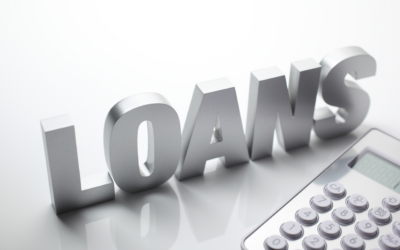One of the most important metrics considered in the real estate and hotel industry is RevPar. The key performance indicator means Revenue Per Available Room, but what exactly does it mean? Why is it used to calculate revenue and how is it calculated? Well, the following article is a detailed guide that answers these questions for better clarity. So, what are we waiting for? Let’s jump right into it and get started with calculating the RevPar for your investments.
What Exactly Is RevPar In Commercial Real Estate?
Generally used in the hospitality industry, RevPar helps hotels understand their revenue and better analyze it. This is because RevPar calculates the total generated revenue based on whether a room is occupied or not. But, why is this metric used? Several hotels use RevPar to accurately price their rooms based on different factors. Moreover, it helps check the hotel’s performance and compare it with competitors or other hotel brands.
RevPar In Simple Terms
RevPar is an important metric that helps a property assess its ability to fill the available rooms at an average rate. When a property’s RevPar increases, you can expect an increase in the average room rate or growth in its occupancy rate. But, an increase in RevPar does not necessarily mean a boost in the property’s overall performance.
The main issue with RevPar is that it does not consider the property size. This is why RevPar alone cannot be used to calculate a property’s revenue. It is highly possible that a hotel with low RevPar can have rooms that generate much higher revenues. Moreover, larger and better rooms like penthouses and cottages might be overcompensating for low-quality rooms that guests do not check-in.
This is why RevPar works better as a comparison tool just like other financial metrics. Checking the metric over time and comparing it with previous values can help understand how it changes based on seasons. Hence, it is a good way to understand consumer trends and change marketing and business plans accordingly.
Other than that, RevPar can also be compared to RevPars of other hotels in the same area and get an idea of the hotel’s performance. But, another factor to consider is that RevPar only considers hotel revenues and does not give any idea about the expenses.
We recommend hotel management set internal RevPar targets as it might be difficult to find revenue and occupancy details of other hotels. So, analyzing and comparing RevPar to draw conclusions might be difficult.
How Can I Calculate RevPar?
You can calculate your hotel’s RevPar in two different ways. Both of these formulas will return an amount in USD which is always theoretically lower than the actual daily rate. This is because we always consider that a hotel cannot be occupied more than 100%. The formulas you can use are:-
From Total Revenue And Available Room Count
If you want to calculate RevPar based on the number of unoccupied and available rooms, use this formula:-
Here, the hotel management needs data on the total revenue generated from rooms.
From Average Daily Revenue Rate And Occupancy Rate
The hotel management should know the daily rate of revenue and the average occupancy rate to implement this formula:-
This formula is more suited for completely occupied hotels that have very few available hotels.
Is There Any Way To Increase RevPar?
Generally, an increase in RevPar means that the hotel is earning more money from each of its rooms. Hence, most hotels focus on increasing their RevPar which can be difficult at times. But, don’t worry! We’re here to help. The following sections discuss some common ways in which hotels can boost their RevPar.
Better Demand Forecasts
The hospitality industry is quite dynamic as the demand increases and decreases based on conditions like the season, weather, and much more. Better understanding these trends can help understand changing customer demands and adjust accordingly. For example, hotels will be able to charge more during peak seasons and decrease the rates in the off-season. Alternatively, it helps the hotel management understand whether some rooms are soon to be unoccupied or not and adjust the discount rates accordingly.
Convince Guests For Longer Stays
Hotels can offer promotional packages and discounts for customers with longer stays. This will provide an incentive to guests and motivate them to book for a longer period. On the other hand, hotels might be losing business to properties offering booking flexibility. We recommend weighing both options properly and deciding on your preferred approach.
Better Customer Service
If you want to focus on boosting your hotel’s long-term RevPar, you might want to focus on bettering and fulfilling non-financial targets. For example, better customer service ensures a better guest experience and increases the chances of the guest returning with their
Business. On the other hand, bad guest experience decreases the likelihood of the guest’s return to the hotel. Moreover, better customer service might also help with the hotel’s networking as satisfied guests recommend the hotel to their peers.
Increased Technology Usage
Statistics reveal that approximately 69% of global travel bookings took place online in 2023. This shows that the travel and tourism industry is moving towards digitization which increases the need for hotels to implement and leverage advanced technology. Hotels can try implementing robust online booking systems, a central management system to better efficiently track bookings, and a list of resources to better help guests. You can also try outlining answers to frequently asked questions and send out proper emailing lists for added convenience.
What Are The Alternative Methods To RevPar?
It is quite easy to calculate the RevPar of properties which ensures better comparison of the same across hotels and brands. However, RevPar does not take the hotel’s profits or probability measures into account. This makes it unreliable at times and hence, arises the need for some alternative measures. Some common alternative metrics that you can use include:-
Total Revenue Per Available Room (TRevPar)
As the name suggests, the difference between TRevPar and RevPar is that the first one takes the total revenue into account. But, what does this total revenue mean? Well, this means that properties should take into account revenue earned from the different amenities available such as spas, gaming areas, restaurants, pools, and entertainment areas. The only issue is that similar to RevPar, TRevPar does not account for the hotel’s expenses. The formula to calculate TRevPar is as follows:-
TRevPar offers a holistic view of the total revenue earned and works best for hotel owners and accountants. However, it does not allow the management to isolate revenue streams for proper analysis.
Adjusted Revenue Per Available Room (ARPAR)
The main issue with RevPar was that it did not take variables like booking seasons into account. This issue is solved by ARPAR. Here, adjusted revenue means that the hotel management factors in the variable costs and revenues. But, how do you find out the adjusted revenue? Simply subtract significant costs like room cleaning, TV, electricity, water usage, and supplies from the daily average revenue rate. But, you should also factor in the generated additional revenue like room service. The formula for ARPAR is:-
Here,
ADR = Average Daily Revenue Rate
VCPOR = Variable Costs Per Occupied Room
ARPOR = Additional Revenue Per Occupied Room
AOR = Average Occupancy Rate
Although ARPAR is a good way to factor in additional costs and revenue, it omits several overhead costs that the hotel management might incur in ensuring proper hotel operation.
Gross Operating Profit Per Available Room (GOPPAR)
The other metrics like RevPar, TRevPar, and ARPAR considered only available rooms but failed to take into account the occupied ones. This is easily solved by GOPPAR. It takes into account the gross operating profit which offers a larger view of the total overall expenses incurred by the hotel management. The formula for GOPPAR is:-
Although GOPPAR takes the gross operating profit into account, it includes expenses like furniture costs and internet bills that cannot be controlled by the hotel management.
An Example of RevPar
Let us consider a hotel with about 200 rooms, an average occupancy rate of 80%, and an average room rate of $200. So, the RevPar of the hotel is calculated as:-
Hence, the hotel’s RevPar comes to $1600 per day. If you want to know the RevPar over a period, multiply the daily RevPar by the total number of days.
As you can see, RevPar considers the average room rate. This means that theoretically, we assume that the price of every room is the same. The hotel’s RevPar also helps the management properly assess and make better business decisions.
Conclusion
RevPar is often utilized by the hotel industry to gauge and analyze a hotel’s overall financial performance. However, the metric does not consider a lot of different factors and cannot be considered an accurate measure of whether a hotel is profitable or not. This is why hotels consider other alternative metrics to accurately confirm their performances. The hotel management can track their RevPar over time and use it to understand key customer trends and the hotel’s performance.
We hope the article was useful for you and helped you understand an important revenue management term. If you need further resources or help, do not hesitate to contact us for solutions based on your goals.





